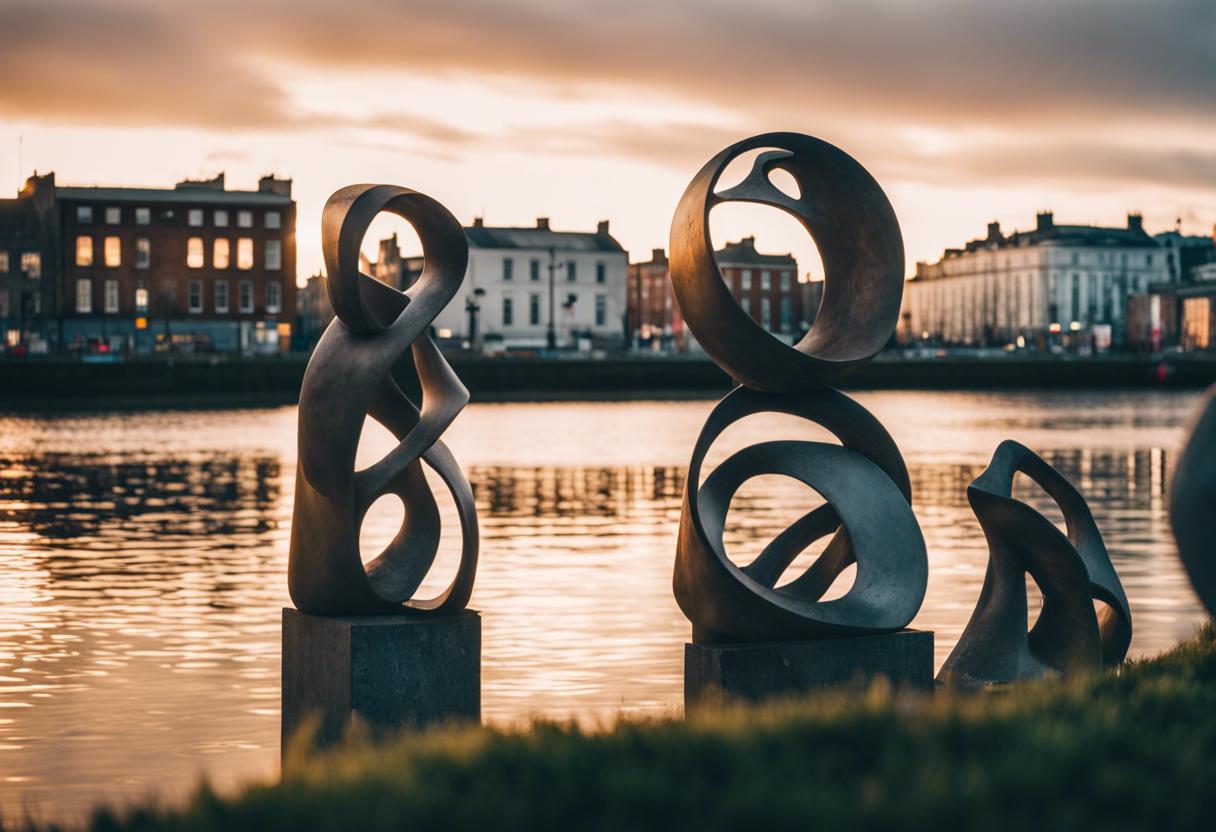Albert Bruce Joy, a renowned sculptor, passed away a century ago on 22nd July. Highly celebrated in the field of sculpture during his time, Joy received several esteemed awards. His uncanny ability to capture a flawless likeness of his subjects and distinct naturalistic style earned him wide acclaim, as noted on the websites artuk.org and speel.me.uk.
Born to the prominent Royal College of Physicians, Ireland affiliate, William Bruce Joy, on 21st August 1842 in Dublin, Joy hailed from a family of Huguenot heritage. Little is known about his mother. His scholastic journey took him to Germany’s Offenbach, King’s College, London and Paris. Initially receiving art education at South Kensington Schools and London’s Royal Academy, he later joined his brother George William Joy, a celebrated portrait and genre painter in the arts.
Fellow Dubliner and distinguished sculptor, John Henry Foley, became Joy’s mentor. Joy spent four years in Foley’s studio as an apprentice. Making his first appearance at the Royal Academy Exhibition in 1866, he consistently showcased his talent there annually until 1923, the year preceding his death. Additionally, between 1870 to 1914, his artwork adorned the Royal Hibernian Academy’s exhibitions. Upon completion of his apprenticeship with Foley, he devoted approximately three years to studies in Rome. Regardless, according to Ruth Devine, author of his biography in the Dictionary of Irish Biography, Joy claimed no other teacher measured up to Foley.
Besides being multilingual, fluent in French, German and Italian, Joy regularly exhibited his work abroad. Among his numerous awards, he had distinctive recognitions from the Vienna World’s Fair (1873) and the Paris International Exhibition (1878). As the sole representative of British fine-arts at the Great Antwerp Exhibition in 1885, he grabbed the only accolade for busts at the Paris Salon in 1896. As noted by Ruth Devine, his many awards led to a flux of notable public monuments and statues commissions. Joy truly shone in the creation of renowned personalities’ reproductions.
One of this renowned sculptor’s most notable public artwork is the vast statue of Liberal MP and ex-prime minister, William Ewart Gladstone (1881), prominently located before Bow Church in London. He has another significant piece in form of Lord Salisbury’s bust (1886), a Conservative MP and premier, on display in Westminster Abbey. His statue of the influential Liberal figure, John Bright (1891) placed in Albert Square, Manchester, is yet another distinguished piece. Ruth Devine noted the sculptor’s fondness for Gladstone and Salisbury as subjects and emphasised how they continued their political tasks and letter writing unfazed by his presence.
Rev H Kingsmill Moore, the Bishop Berkeley Memorial Committee’s secretary, commissioned him to craft a reclining statue of the bishop in Cloyne Cathedral, Co Cork, marking the era when George Berkeley served as Bishop of Cloyne from 1734-53. The statue was finished in 1890. Exchanges with the committee paint him as a diligent craftsman of minimal speech, as Ruth Devine iterated. During this period, his workspace was located at Beaumont Road in West Kensington, London. The public’s high regard is shown by the unique privilege granted to him to create King Edward VII’s death mask. A white marble bust of the king is another one of his creations.
He visited the U.S. twice, commissioned for several works. One of them being the Ayer Lion at Lowell, close to Boston, using multiple lions as models. But Ruth Devine informs us that despite enjoying large-scale projects as a large man, he also produced numerous successful medallions, including one of the popular physicist and mathematician, Sir Gabriel Stokes FRS. His Irish collections include a bust of his father and a full-length marble statue of the notable 19th-century doctor Robert James Graves, both presented in the Royal College of Physicians, Dublin. His seated figure of James Whiteside, Ireland’s lord chief justice, can be viewed in St Patrick’s Cathedral, Dublin. His statue of the esteemed scientist William Thomson, Lord Kelvin (1913) is another feather in his cap, proudly displayed in Belfast’s Botanic Gardens.
Bruce Joy spent his final years in Bramshott Chase, close to Hindhead in Surrey, living as a bachelor until his demise following an extended sickness. Ruth Devine noted that he held fascinating perspectives regarding the nutritional worth of food, predominantly adhering to a vegetable-based diet, which he trusted aided his extended lifespan. This suggests that he was a man who had a mindset that resonates well with contemporary attitudes.

